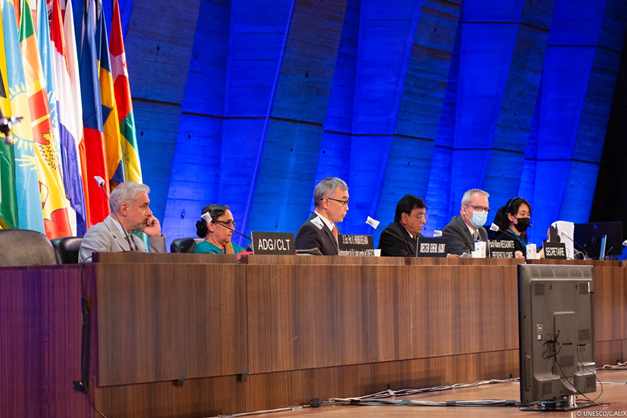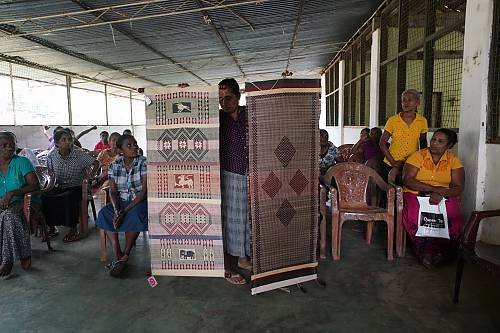
Sri Lankan Dumbara Rata Kalala, or Dumbara mats, are traditional hand-made mats used as wall hangings, tapestries or cushion covers. The mats are made in two or three? villages (Kalasirigama and Alokagama) by a community called kinnara that traditionally supplied ornamental mats to the royal palace as part of obligatory service to the crown and to ruling elites between the fifteenth and nineteenth centuries. Today, artisans weave the mats for local buyers and tourists.
This has been inscribed by UNESCO on its prestigious Representative List of Intangible Cultural Heritage of Humanity. The announcement was made by UNESCO on 15 December 2021 at the 16th Session of the Intergovernmental Committee the organ that implements the 2003 International Convention for the Safeguarding of Intangible Cultural Heritage held from 13th to 18th December this year at the UNESCO Headquarters in Paris.
UNESCO made this decision after examining a nomination prepared by a committee of experts appointed by and worked with the Ministry of Buddhasasana, Religious, and Cultural Affairs in association with the National Library and Documentation Services Board, the Divisional Secretariat Offices of the two relevant districts, and the traditional crafts families of the two villages.
The inscription of the element will certainly improve the visibility of the element, thus enriching the craft practice, empowering the crafts families, and ensuring the viability of this important element. At the same time, the potential dangers such as commercialization and over exploitation are fully aware and steps to protect the element are already in place in the safeguarding plans.
On behalf of the Government of Sri Lanka and its people, Prof. Kshanika Hirimburegama, Ambassador & Permanent Delegate of Sri Lanka to UNESCO express her immense appreciation and gratitude to UNESCO for inscribing ‘Traditional craftsmanship of making Dumbara Ratā Kalāla’ on the Representative List.

Further she thanked the Ministry of Buddhasasana Religious and Cultural Affairs, crafts families, the members of the nomination preparation team, and well-wishers who helped in numerous ways to prepare a successful nomination dossier as well as the Evaluation Body for their excellent work done.